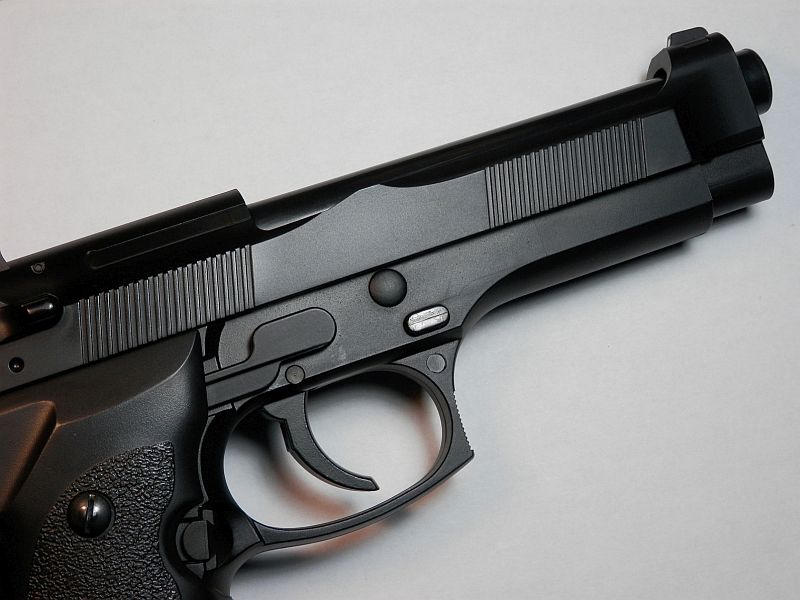MONDAY, June 19, 2017 (HealthDay News) — Each year in America, nearly 1,300 children die from guns, with boys and blacks struck down most often, federal health officials report.
More than half of these deaths are homicides, 38 percent are suicides and 6 percent are unintentional, according to Katherine Fowler, of the U.S. Centers for Disease Control and Prevention, and colleagues.
Plus, almost 6,000 kids are wounded by guns each year, the researchers said.
“Pediatric firearm injuries and deaths are an important public health problem in the United States, contributing substantially each year to premature death, illness and disability of children,” said Fowler, of the CDC’s division of violence prevention.
Based on 2002-2014 data, gun-related violence is the third leading cause of death for kids aged 1 to 17. And gun killings lag only behind car crashes in terms of injury-related deaths, the study showed.
“Finding ways to prevent such injuries and ensure that all children have safe, stable, nurturing relationships and environments remains one of our most important priorities,” Fowler said.
“Playing with a gun was the most common circumstance for unintentional firearm deaths of both younger and older children,” she noted, adding that younger kids often mistook guns for toys.
One recommendation from the American Academy of Pediatrics: Ask if there are guns in a house before allowing your children to play at a friend’s home.
Dr. Al Sacchetti, a spokesman for the American College of Emergency Physicians, said the report reveals “incredibly sobering data.”
“It contrasts sharply with every other advancement pediatrics has made to cut down on death and illness in children,” he said.
A Florida pediatric specialist called the matter “a uniquely American problem.”
“Ninety-one percent of gun-related deaths in high-income countries happen in the U.S.,” said Dr. Leopoldo Malvezzi. He is a pediatric surgeon and director of trauma at Nicklaus Children’s Hospital in Miami.
To determine the toll gun violence takes on America’s youth, Fowler’s team used data from the National Vital Statistics System, National Electronic Injury Surveillance System and the National Violent Death Reporting System.
The death rate from a firearm-related injury averaged nearly two per 100,000 children, with boys accounting for more than eight out of 10 gun deaths, the investigators found.
But, the rate for black children was more than twice that — over four per 100,000. That’s 10 times higher than the rate for whites and Asian/Pacific Islanders, the researchers said.
Older children, aged 13 to 17, more often died in the commission of a crime or in violence between peers, while younger children’s deaths were usually accidental, the study authors said.
Rates of gun homicide were higher in some southern states and parts of the Midwest than elsewhere.
Gun homicides are largely related to gangs and drugs, Sacchetti said.
The highest rates of suicide by gun were among American Indian/Alaska Natives and whites (2.2 per 100,000), Fowler said.
Moreover, kids’ suicides by gun have increased 60 percent since 2007, with mental illness a common factor, the report noted.
Many gun suicides were related to stress and relationship problems with a partner, friend or family member, Fowler explained.
Sacchetti said the best way to prevent these suicides and unintentional injuries and deaths is to keep guns locked away.
Gun homicides of children 12 and under “often involved conflict between intimate partners or family,” Fowler said. And about half of these grim incidents involved multiple murders.
There was some good news, however: unintentional firearm deaths among children decreased from 2002 to 2014. Also, the rate of firearm homicides increased significantly from 2002 and 2007, but then declined, according to the report.
Malvezzi said that making guns safer is essential. But, he added that’s unlikely to occur.
“If we had a toy that hurt five people, the news would be all over it, and here we have 1,300 kids die each year from a product,” he said.
Malvezzi said a public health review is called for, but “the people who defend the product will do everything they can to avoid review, and they have.” He was referring to legislation “that says that no federal money can go to research on guns.”
Calls to the National Rifle Association for comment were not returned.
The report was published online June 19 in the journal Pediatrics.
More information
For more on children and guns, visit the Brady Center to Prevent Gun Violence.
Copyright © 2025 HealthDay. All rights reserved.

